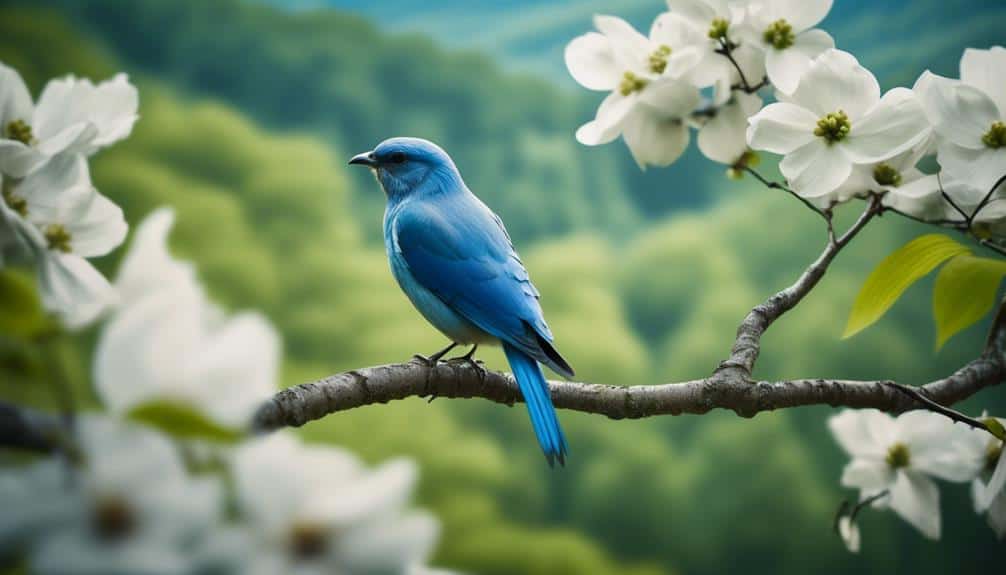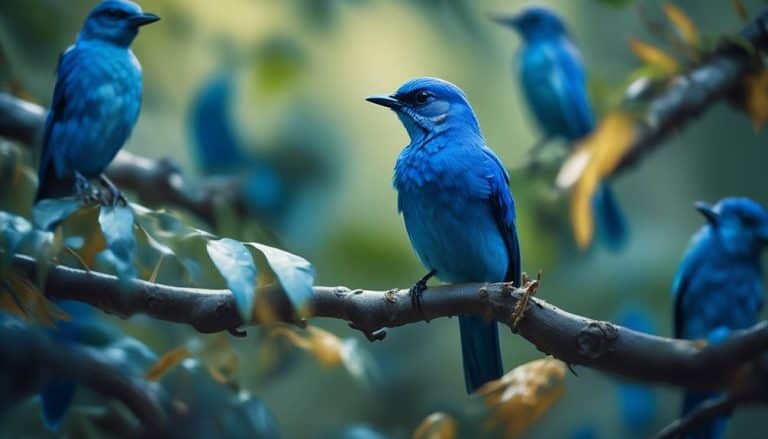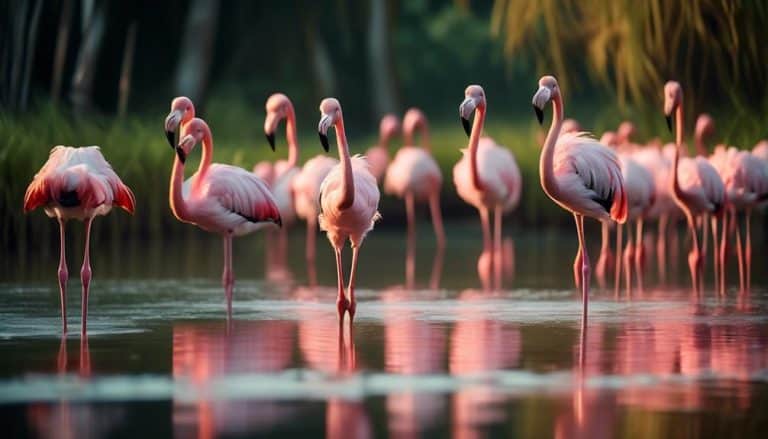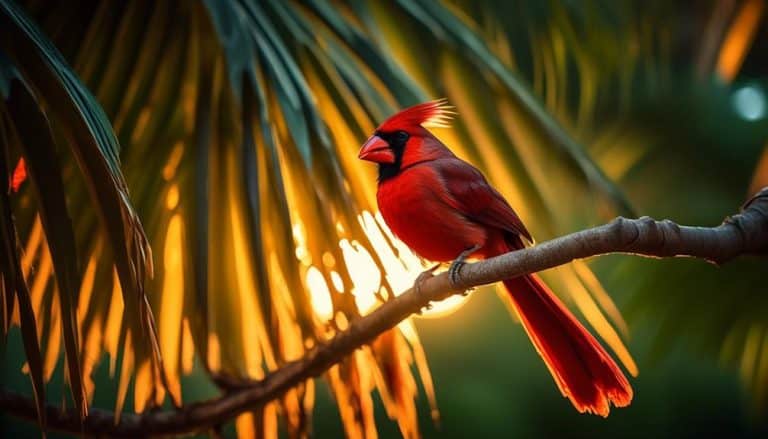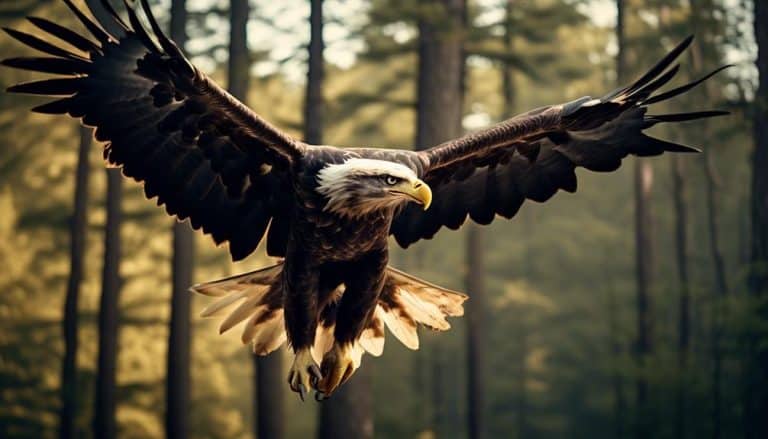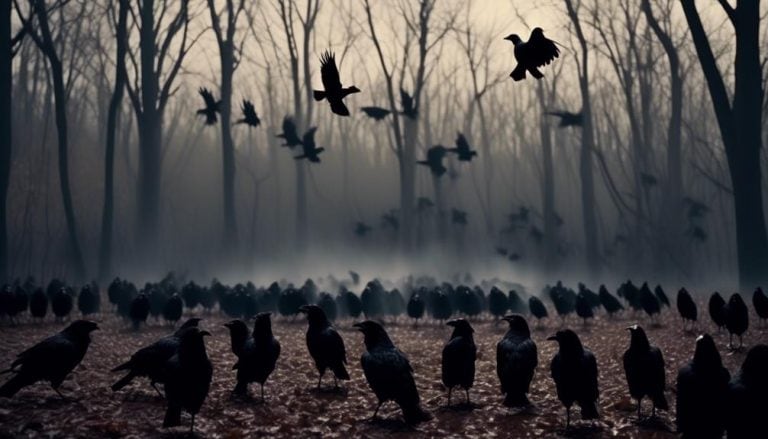As I peer into the vibrant blue sky of Virginia, my eyes catch the graceful flight of the Blue Birds, like tiny azure gems dancing on the wind. These enchanting creatures have captivated the hearts of many, and I find myself drawn to their beauty and wonder.
But there is so much more to discover about these birds that call Virginia home. From their habitats and behaviors to attracting them to our own backyards, there is a wealth of knowledge waiting to be unearthed.
Join me as we explore the world of Blue Birds in Virginia, unraveling their secrets and unveiling the efforts made to conserve their existence.
The Bluebird Species in Virginia
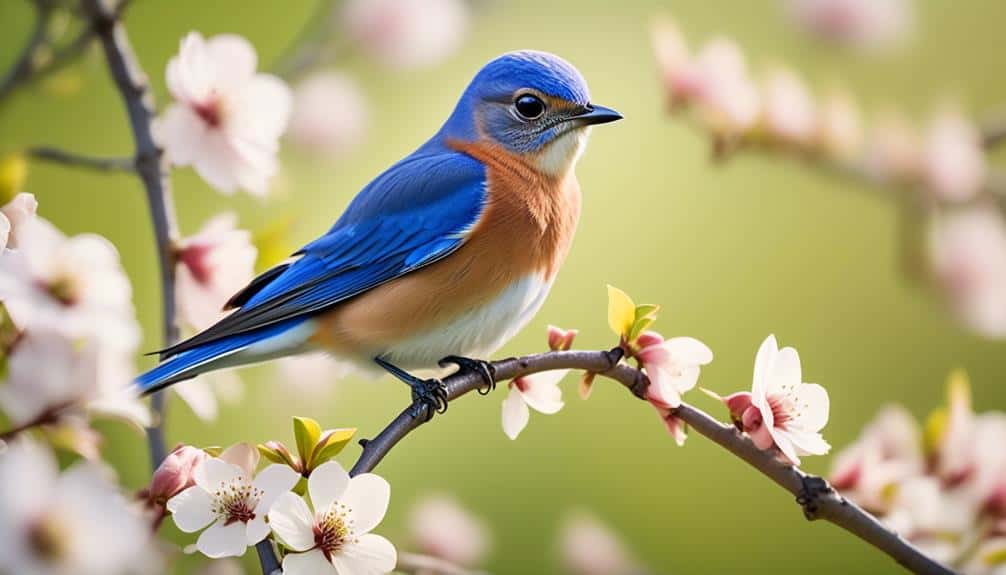
The Eastern Bluebird (Sialia sialis) is a species of bluebird commonly found in Virginia. As a migratory bird, the bluebird exhibits distinct migration patterns. In Virginia, these patterns can vary depending on the time of year. During the breeding season, which typically occurs from March to August, bluebirds migrate northward from their wintering grounds in the southern United States and Mexico. They seek out suitable nesting sites to establish their territories and raise their young.
When it comes to nesting habits, bluebirds are cavity nesters. They prefer to nest in natural cavities, such as tree hollows, but they also readily utilize man-made structures like birdhouses. In Virginia, bluebirds often select open habitats with scattered trees, such as meadows, orchards, and residential areas, as their preferred nesting locations. They construct their nests using grasses, pine needles, and feathers, creating a cup-shaped structure lined with softer materials.
Bluebird pairs work together to build their nests, with the male primarily responsible for gathering materials and the female taking charge of the actual construction. Once the nest is completed, the female lays a clutch of around four to seven eggs. Both parents take turns incubating the eggs for about two weeks until they hatch. The nesting period lasts approximately three to four weeks, during which the parents tirelessly feed and care for their nestlings until they fledge and become independent.
Blue Bird Habitats in Virginia
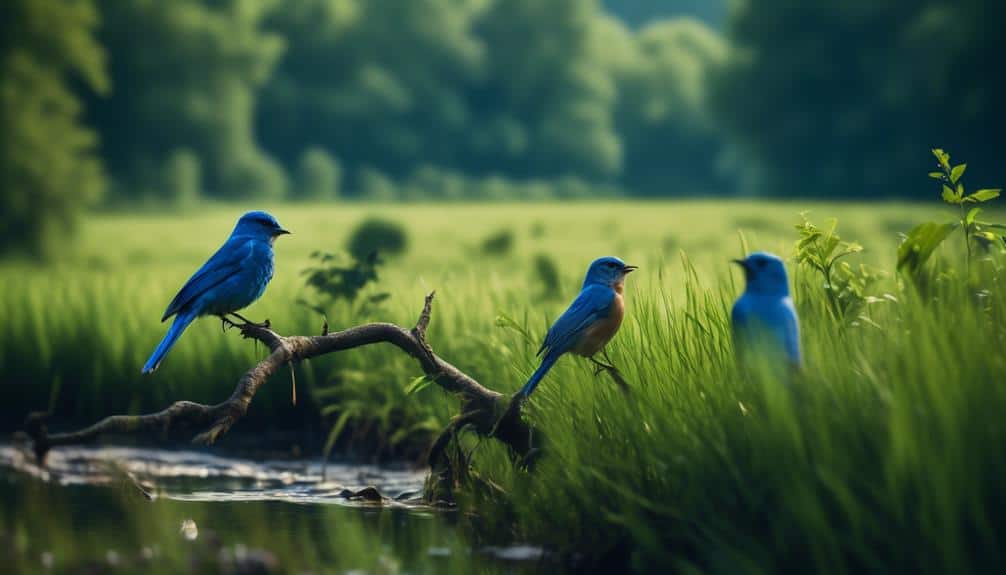
Bluebirds in Virginia can be found in a variety of habitats throughout the state. Their presence isn't limited to a specific region or habitat type, as they're adaptable birds that can thrive in different environments. However, certain habitats provide more suitable conditions for their survival and breeding.
Here are some key habitats where bluebirds can be commonly found in Virginia:
- Open fields and meadows: Bluebirds are often seen in open areas with short grass, where they can easily spot insects and forage for food. These habitats provide ample opportunities for nesting in tree cavities or nest boxes.
- Wooded areas with clearings: Bluebirds are known to inhabit wooded habitats with open clearings, where they can find both shelter and a sufficient food supply. These areas offer a balance of cover and open spaces for their foraging activities.
- Farmlands and agricultural areas: Bluebirds are frequently spotted in farmlands, pastures, and agricultural fields. These areas provide a mix of open spaces and perching sites, as well as a variety of insects that serve as their primary food source.
- Residential areas and suburban neighborhoods: Bluebirds have successfully adapted to human-altered landscapes and can be found in residential areas with open spaces, gardens, and yards. They often utilize nest boxes provided by homeowners to raise their young.
Understanding the preferred habitats of bluebirds is crucial for conservation efforts and maintaining a healthy bluebird population in Virginia. Additionally, studying their migration patterns in Virginia can provide valuable insights into their movements and help identify critical stopover sites during migration. By preserving and enhancing these habitats, we can ensure the continued presence of bluebirds in Virginia for generations to come.
Behaviors and Characteristics of Blue Birds
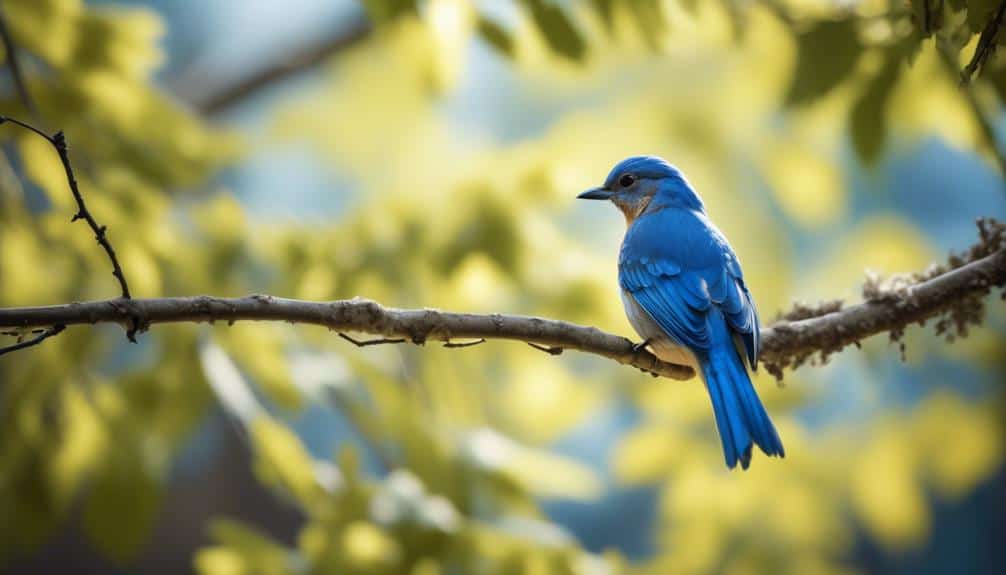
To understand the behaviors and characteristics of bluebirds, it's important to observe their interactions with their environment and other members of their species. Bluebird migration patterns play a significant role in their behavior. These birds exhibit a fascinating migratory behavior, with some populations migrating long distances while others remain sedentary. In Virginia, for example, Eastern Bluebirds are known to migrate to southern states during the winter months, while some individuals may stay in Virginia throughout the year. Understanding these migration patterns can provide insights into their behavior and habitat preferences.
Another important aspect of bluebird behavior is their song and communication. Bluebirds are known for their melodious and distinctive songs, which serve multiple purposes. Male bluebirds use their songs to attract mates and defend their territory. The songs are complex and unique to each individual, allowing bluebirds to identify and communicate with one another. Through their songs, bluebirds establish social hierarchies, communicate warnings, and coordinate their activities.
Observing and studying bluebird behaviors and characteristics can provide valuable insights into their ecology and conservation. By understanding their migration patterns and songs, we can gain a better understanding of their habitat requirements and implement effective conservation strategies. Therefore, continued research and observation of bluebirds' behaviors and characteristics are crucial for their long-term conservation and well-being.
Attracting Blue Birds to Your Backyard
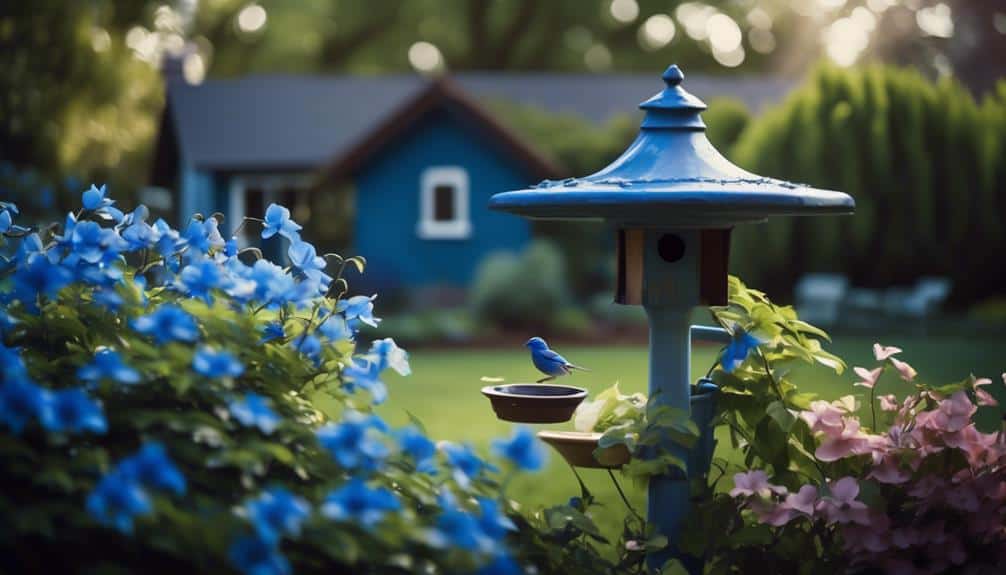
In order to attract bluebirds to your backyard, it's important to create a suitable habitat that meets their specific needs. Bluebirds are cavity nesters, so providing nest boxes is crucial. Here are some key steps to attract blue birds to your backyard:
- Install bird feeders: Bluebirds are insectivores, but they also enjoy fruits and berries. By offering a variety of food, such as mealworms and suet, you can attract them to your yard.
- Provide clean water sources: Bluebirds need fresh water for drinking and bathing. Consider installing a birdbath or a small pond to provide them with a reliable water source.
- Create a blue bird-friendly garden: Plant native trees and shrubs that produce fruits and berries, such as dogwood and elderberry. These plants not only provide food but also offer shelter and nesting sites.
- Reduce pesticide use: Bluebirds rely on insects as a food source for themselves and their nestlings. Minimizing pesticide use in your yard will help preserve their food supply and promote a healthy environment for them.
Tips for Blue Bird Watching in Virginia
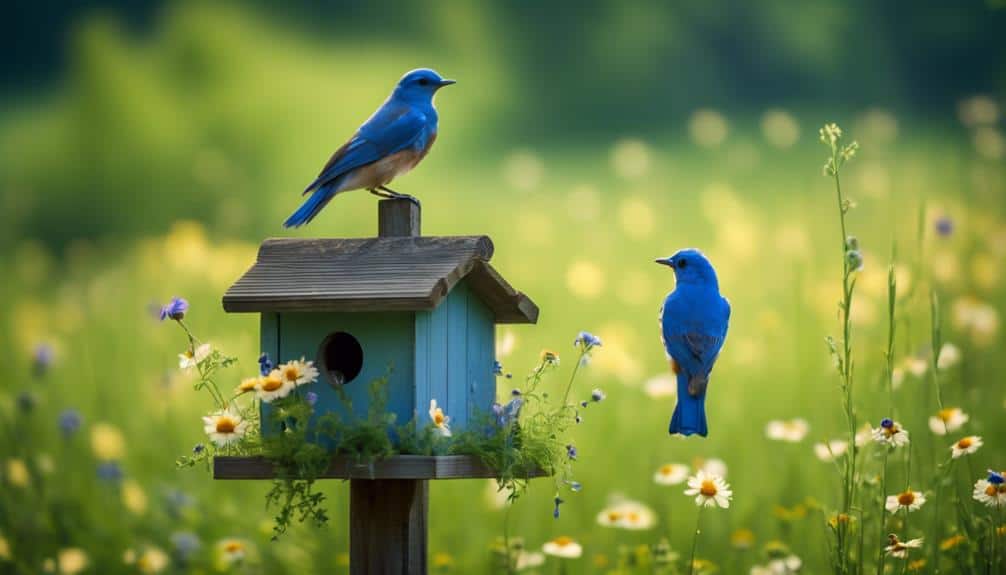
For optimal blue bird watching experiences in Virginia, it's essential to be mindful of their natural habitats and behavioral patterns. Understanding blue bird migration patterns is crucial in locating their presence. In Virginia, blue birds typically migrate to the state during the spring and summer months, while some may also overwinter in milder regions. To maximize your chances of spotting blue birds during migration, focus your observations around open fields, meadows, and woodlands, where they're known to forage for insects and berries.
When it comes to blue bird photography, there are a few tips to keep in mind. Firstly, it's important to approach blue birds cautiously and maintain a respectful distance to avoid disturbing them. Using a telephoto lens can help capture clear, detailed images without getting too close. Secondly, consider the lighting conditions. Shooting during the early morning or late afternoon can provide soft, warm lighting that enhances the colors of the blue birds. Lastly, patience is key. Blue birds are known for their quick movements, so be prepared to wait for the perfect moment to capture them in action.
Conservation Efforts for Blue Birds in Virginia
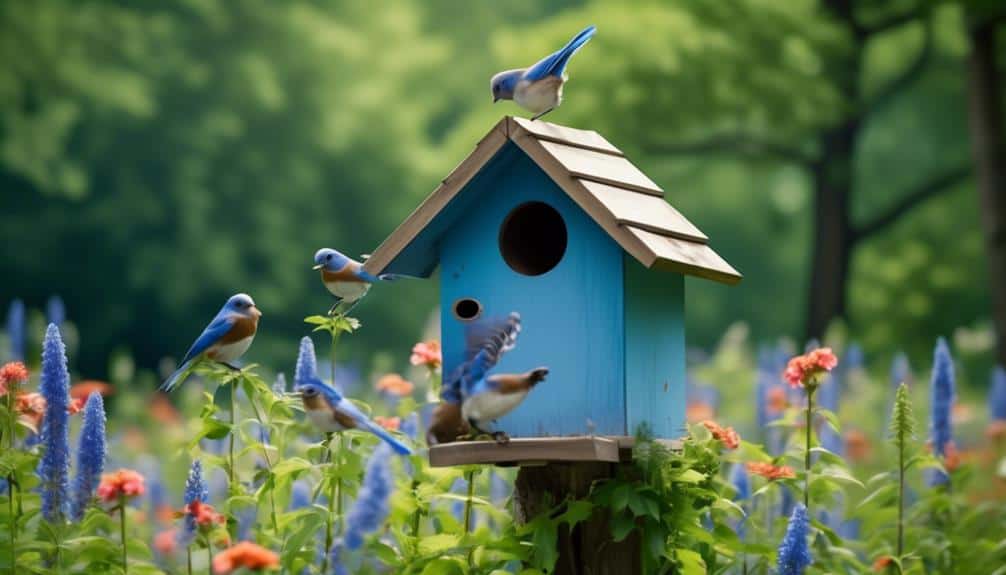
Conservation efforts aimed at protecting the blue bird population in Virginia have been implemented to safeguard their habitats and promote their overall well-being. These efforts are crucial in light of the significant decline in the blue bird population observed in recent years. To address this decline, the following measures have been taken:
- Habitat Preservation: Conservation organizations have worked tirelessly to protect and restore the natural habitats of blue birds in Virginia. This involves preserving open grasslands, woodlands, and meadows, which are essential for their nesting and foraging activities.
- Nest Box Programs: To support blue bird breeding, nest box programs have been established across the state. These programs involve installing specially designed nest boxes in suitable locations, providing blue birds with safe and secure nesting sites.
- Predator Management: Efforts have been made to manage predator populations that pose a threat to blue bird nests. This includes implementing strategies such as installing predator guards on nest boxes and conducting predator control programs when necessary.
- Monitoring Blue Bird Nests: Regular monitoring of blue bird nests is crucial for assessing their breeding success and identifying any potential issues. Citizen science initiatives have been instrumental in collecting data on nesting activity, allowing researchers to better understand the challenges faced by blue birds and develop effective conservation strategies.
These conservation efforts aim to reverse the decline in the blue bird population and ensure their long-term survival in Virginia. Through habitat preservation, nest box programs, predator management, and nest monitoring, we can work towards a brighter future for these beautiful birds.
Frequently Asked Questions
What Is the Average Lifespan of a Bluebird in Virginia?
The average lifespan of a bluebird in Virginia is around 6 to 10 years. These beautiful birds are known for their migratory habits, with some traveling long distances during their annual migration.
Are Bluebirds in Virginia Migratory or Do They Stay Year-Round?
Bluebirds in Virginia can be migratory or year-round residents. Migration patterns vary depending on the availability of food and nesting sites. Conservation efforts focus on providing suitable habitats and nesting boxes to support their populations.
Can Bluebirds in Virginia Interbreed With Other Bird Species?
Bluebirds in Virginia have the ability to interbreed with other bird species, which is fascinating. This phenomenon has been studied extensively as part of conservation efforts to understand the impact on genetic diversity.
How Do Bluebirds in Virginia Communicate With Each Other?
Bluebirds communicate with each other through a variety of vocalizations and communication methods. Their calls and songs serve to establish territories, attract mates, and communicate warnings. These communication signals play a crucial role in their social interactions and breeding behaviors.
Do Bluebirds in Virginia Have Any Predators That Pose a Threat to Their Population?
Predator threats to bluebirds in Virginia are a concern for their population. However, conservation efforts aim to mitigate these risks and ensure the long-term survival of these beautiful birds.
Conclusion
In conclusion, the bluebird species in Virginia is a remarkable and beautiful part of our natural ecosystem. Their habitats, behaviors, and characteristics are fascinating to observe.
By implementing effective strategies to attract bluebirds to our yards, we can enjoy the pleasure of watching these delightful creatures up close.
Furthermore, it's crucial to support conservation efforts to ensure the long-term survival of bluebirds in Virginia. Their presence brings a touch of magic and wonder to our surroundings, making our lives richer and more vibrant.

